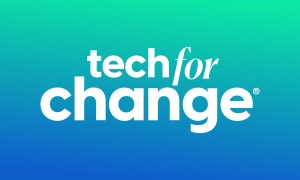
In just a few short years, wearable devices have gone from futuristic “nice to haves” to real world, here-this-minute lifesavers. But while most of us are content to take our Apple Watch Series 6 blood oxygen sensors for a spin, researchers like Oren Shriki, of the Department of Cognitive and Brain Sciences at Israel’s Ben-Gurion University, are already hard at work on what comes next.
Shriki is developing a wearable that will be able to generate advance warning about an impending epileptic seizure, and then send the message to the user’s smartphone or, potentially, other device — up to one hour before it happens. In doing so, it could help users to prepare and avoid scenarios such as falls or other injuries that might arise from them being caught unawares.
“[Our spinout company] NeuroHelp developed algorithms that can detect epileptic seizures, and even more importantly forecast upcoming seizures, based on non-invasive measurement of brain activity,” Shriki told Digital Trends. “The algorithms were developed using EEG (read: electroencephalography) data collected from many patients with epilepsy. The end goal is to develop a compact wearable device that records EEG from the scalp and sends the signals to a smartphone. A
All about the brain signals
So far, Shriki said the team has demonstrated the efficacy of the algorithms using a database of EEG recordings taken from patients with epilepsy. The team has trained and tested multiple machine learning algorithms, with the most effective one achieving a 97% level of accuracy. The algorithms function by looking for characteristic patterns of brain activity associated with an ongoing or an upcoming seizure. The researchers who developed the algorithms are leading experts in both analysis of brain signals and machine learning, making this an ideal project for them to work on.
Unlike an Apple Watch, however, which carries out all its assessments via the wrist, this sensing ability does require that wearers wear head-mounted electrodes. (Although they did demonstrate that the algorithm’s predictive abilities only dipped to 95% when significantly fewer electrodes were employed.) Still, with brain-reading chips and other similar technologies on the way, that doesn’t necessarily have to pose an impediment to this tech going mainstream.
“Other approaches [do exist that] involve smart watches with motion sensors,” Shriki said. “[But] they can only detect seizures, not predict them. Second, they suffer from false alarms due to movements which are not seizure-related, and they cannot detect seizures with no muscular manifestations. The challenge in our approach is to have a compact hidden design that will be accepted by the epilepsy community, and we are working on that.”
As to when this might hit the market, Shriki said it may take an additional two years. “We are working on several things in parallel, including the design of the device, which will be based on off-the-shelf components, clinical experiments, and FDA approval,” he said.


